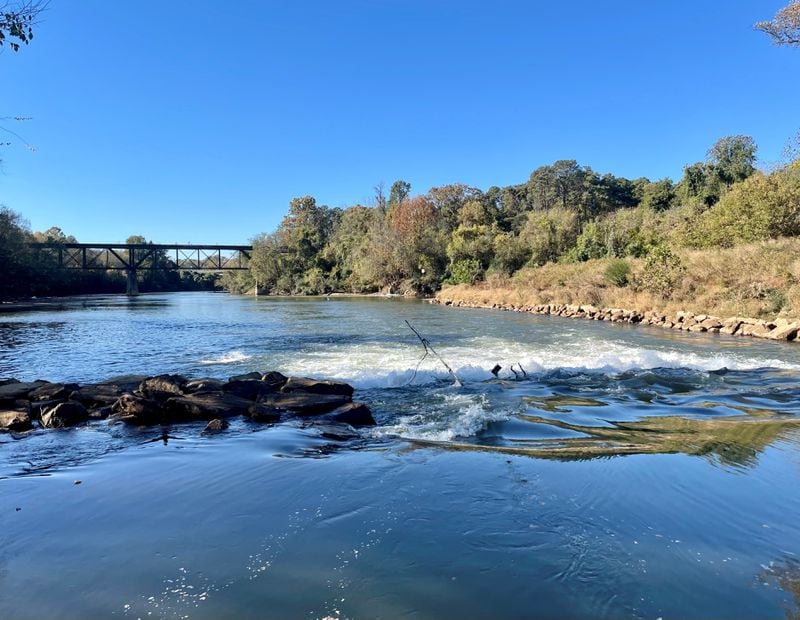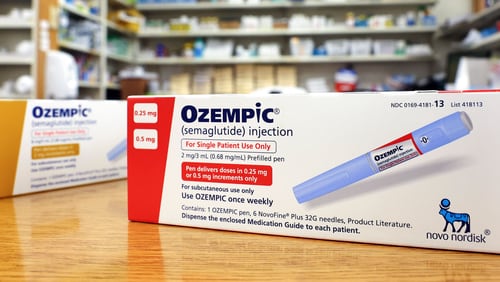The city of Atlanta has outlined fixes for its largest wastewater treatment plant, after it was slapped with dozens of violations last month for releasing potentially dangerous levels of bacteria into the Chattahoochee River.
While the situation has improved, local environmental groups are still urging the public to use caution when paddling, fishing, or physically contacting the river between where the plant’s wastewater empties into the river near Atlanta Road and Franklin, Georgia, roughly 60 miles downstream.
The city’s plans were submitted to regulators at the Georgia Environmental Protection Division (EPD) on April 19 in response to a notice about dozens of apparent violations emanating from the R.M. Clayton Water Reclamation Center. The plant, located in northwest Atlanta on the Chattahoochee, is one of the largest of its kind in the Southeast and is permitted to discharge as much as 100 million gallons of treated wastewater every day into the river.
Since last July, the facility’s discharges have repeatedly failed to meet state and federal standards, according to a March 22 letter sent from EPD to Atlanta’s Department of Watershed Management, which runs R.M. Clayton.
EPD officials said levels of E. coli, ammonia, phosphorus and more in the facility’s wastewater releases into the river were above allowed limits on 48 occasions between July 2023 and February. Contact with water containing high levels of E.coli and other sewage-borne pathogens can lead to serious illness, while ammonia and phosphorus feed algae blooms and can cause fish kills.
The plant also failed to report violations to EPD within 24 hours of learning of them, as its required to do, the letter says. It was not immediately clear whether the city could face fines for the alleged infractions.
In March, the nonprofit Chattahoochee Riverkeeper had continued detecting concentrations of units of E. coli around the facility’s outfall that were about 950 times higher than what the federal government considers safe for swimming and recreation.
In the wake of the riverkeeper’s findings, EPD inspectors visited the plant on March 7 and found many of its treatment systems were damaged or completely offline.
In its response to the alleged violations and inspection report, Watershed Commissioner Mikita Browning blamed the problems on a series of “illicit” discharges that made their way into the R.M. Clayton Plant in March and May of last year. In addition to receiving sewage, the plant accepts wastewater from industrial customers.
The discharges contained high levels of ammonia and nitrogen, Browning said, which disrupted the bacteria the plant uses to treat the sewage it receives. Browning said the department investigated the source, but was unable to pinpoint their origin.
Heavy rain events earlier this year compounded the problem, Browning said, causing “cascading impacts” to the plant’s treatment systems. In its response to EPD, Atlanta Watershed says it began addressing the issues before the inspection and detailed its plans to bring the rest of the plant back online.
Of the plant’s eight primary settling tanks used to remove solids, known as clarifiers, three are now online. Repairs to the other five are expected to be complete by the end of June.
Only four of the plant’s 10 secondary clarifiers are currently operational, but the department said it expects to have seven back in service by June. The three final clarifiers were damaged so badly that portions will require a complete rebuild, work that the Atlanta Watershed said could take until the end of this year to finish.
Credit: Riley Bunch/riley.bunch@ajc.com
Credit: Riley Bunch/riley.bunch@ajc.com
To pick up the slack, the facility is using mobile clarifiers to remove solids and chlorine to further disinfect wastewater.
In a statement to The Atlanta Journal-Constitution, Browning said her department “is fully committed to ensuring our water and wastewater are treated to the highest standards, including complying with the EPD’s latest rules and regulations.”
EPD spokeswoman Sara Lips said it is reviewing the city’s responses and would work with them “to determine appropriate timelines for sharing additional information and project updates.” Lips noted that the agency has seen a decline in the E. coli levels and other contaminants reported in the plant’s discharges since mid-March.
The riverkeeper, however, said it is still concerned about the situation. While it has not found high levels of E. coli since April 11, the group says it is still detecting high levels of suspended solids and nutrients coming out of the plant. The riverkeeper also expressed concern about the length of time the city has said it could take to complete its remediation plans.
“While we appreciate (Atlanta Watershed’s) ongoing efforts to improve the discharge, our data indicates that R.M. Clayton is a major threat to the Chattahoochee River, downstream river users and the river’s ecosystem,” said Jason Ulseth, the Riverkeeper’s executive director.
About the Author








